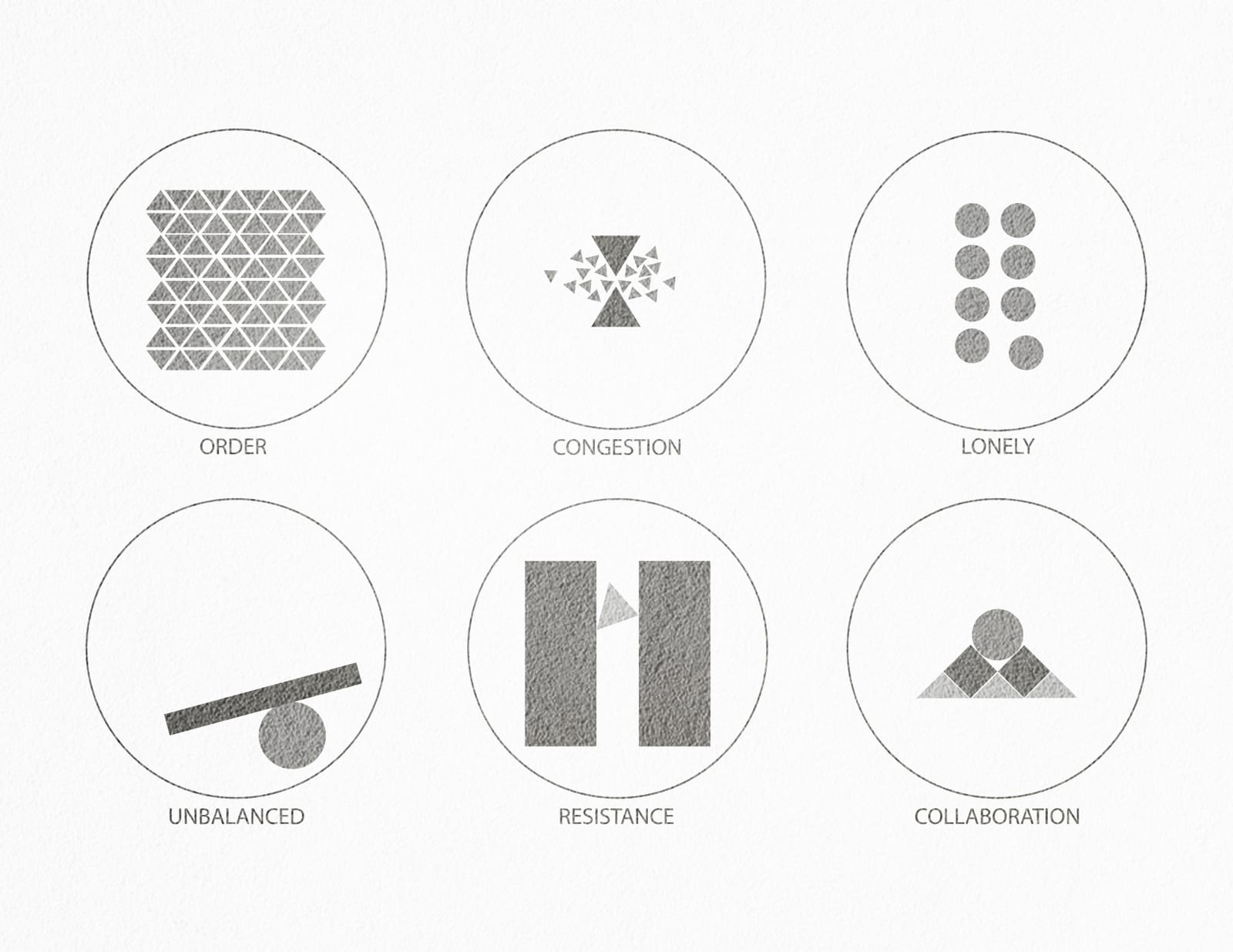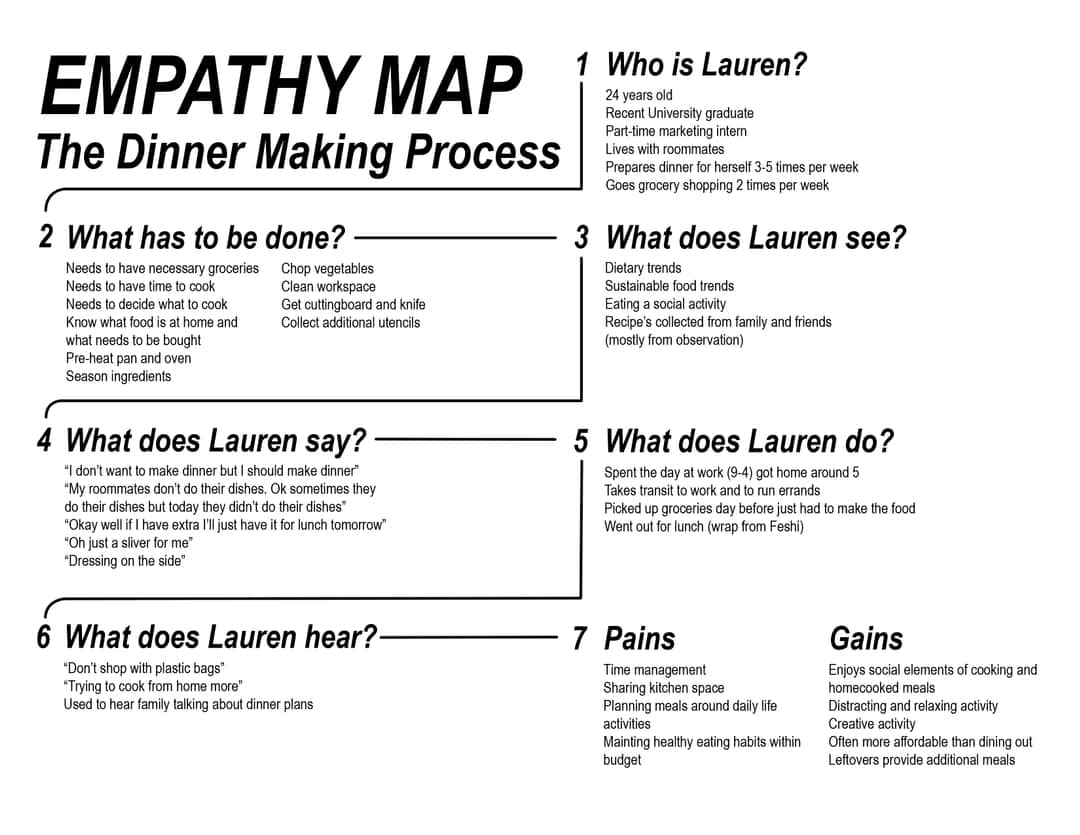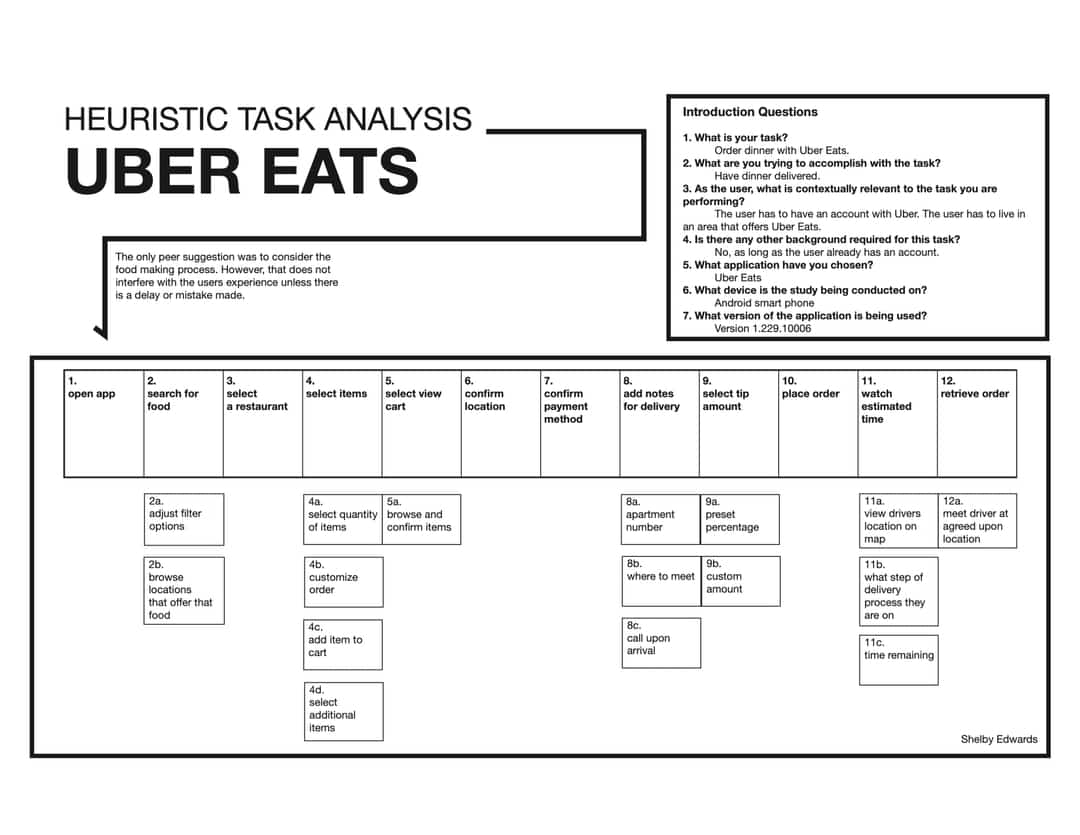UX Exercises
Guiding Choices With Imagery![]()
One of the most effective ways to ︎︎︎guide a user through a process is with visual cues︎︎︎.
But defining what these visuals are is sometimes a challenge.
The image has to be simple enough to be ︎︎︎easily understood while communicating its meaning︎︎︎, or purpose to the viewer. This was an exercise in creating visuals that communicate the same things as the words they are inspired by.
How Do We Prepare For Dinner?
![]()
This is an example of an empathy map. They are a research tool used to help ︎︎︎better understand the flow of an experience︎︎︎ by observing how someone behaves and acts. They explore the task itself and the points where the user makes decisions, and why they made them. It is helpful for the designer to be able to imagine going through this process and to design with that empathic experience in mindHow Do You Order On Uber Eats?![]()
In my understanding, a Heuristic Task Analysis (HTA) is performed to examine every step necessary to complete a task. By going through the process with this intention, ︎︎︎the designer is forced to consider the usefulness and intuitiveness of a product︎︎︎, and determine if that product caters to how a user would naturally approach it.
This is an example of an HTA done on the Uber Eats app. It shows every step the user must go throug
h starting with opening the app and ending with retrieving the order. Without going through this process one wouldn’t assume that there are actually 12 tasks and 16 sub-tasks involved. Ordering from Uber eats seems like an incredibly easy and fast process. ︎︎︎The fact that the user would underestimate the work involved speaks to the effective design of the app.︎︎︎



